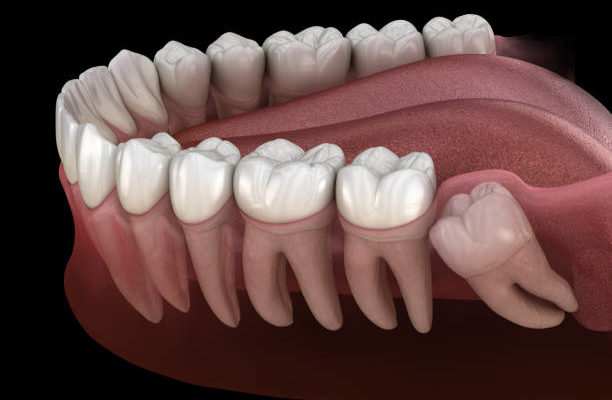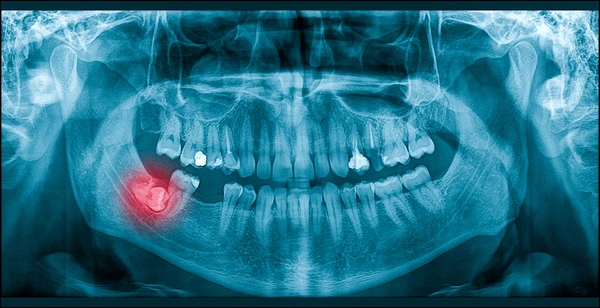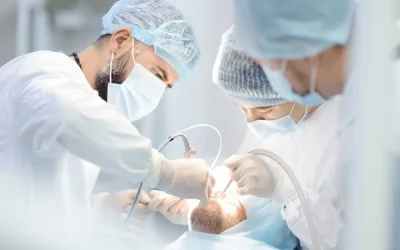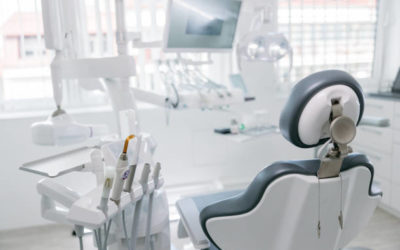
How can I soothe the pain of wisdom teeth?
The appearance of wisdom teeth raises many questions, especially when pain is involved. Many dread this pivotal moment in adolescence or early adulthood when those third molars erupt. Between swelling, jaw discomfort and sometimes even unexpected complications, it's hard to remain indifferent to these new arrivals at the back of the dental arch. Let's take a closer look at the origins of pain, the warning signs and the various solutions available to preserve oral health and quality of life.
Why do wisdom teeth cause pain?
The eruption of wisdom teeth is often associated with discomfort. But why do these third molars generate so many unpleasant symptoms in some people, while others feel almost nothing? It all starts when they first appear, usually between the ages of 17 and 25. This episode, called "eruption", can go off without a hitch... or trigger a real storm in the mouth.
In many cases, the problem stems from a lack of space in the dental arch. Other teeth already well established leave little space for the newcomer. The result: the tooth tries to break through the gum, creating pain, sensitivity and sometimes even visible swelling of the cheek on the affected jaw. This struggle for space is the main starting point for many of the problems encountered during this period.
What are the symptoms associated with the eruption of wisdom teeth?
Recognizing the signs associated with third molars is often the key to taking action before surgery becomes unavoidable. Three of the most common symptoms are pain, swelling and problems opening the mouth.
Some also experience a diffuse discomfort that can radiate to the ear, accentuated when chewing or brushing teeth. Others notice persistent bad breath and, sometimes, an unpleasant taste in the mouth. All these signs should prompt you to consult a specialist as soon as possible, in order to establish a precise diagnosis and prevent simple discomforts from leading to serious complications.
Acute pain and inflammation: how to react?
A sharp pain at the back of the jaw frequently makes patients concerned by the eruption of third molars wince. This sensation is often accompanied by local redness and difficulty in opening the mouth fully (trismus).
Sometimes, the gingiva partially covering the tooth may swell, forming a painful "cap" known as pericoronitis. In such cases, a quick visit to the dentist or maxillo-facial surgeon can effectively relieve the symptoms, thanks to an appropriate local treatment.
Signs of complications to watch out for
Marked swelling, the presence of pus and fever are particularly noticeable. These signs may reveal an infection linked to the tooth's inability to make its way properly, known as a pericoronary abscess. Prompt treatment considerably reduces the risk of aggravation, and avoids the need for complex post-operative care.
Other detectable complications include early caries on the neighboring tooth, or progressive displacement of the entire dental arch, responsible for sometimes spectacular malpositions. Regular monitoring during preventive visits remains essential, even if no obvious pain is present.
What are the long-term consequences for wisdom teeth?
It's perfectly legitimate to wonder what problems arise after or during the eruption of third molars. For while some teeth find their place without worry, others cause a number of negative interactions with the rest of the jaw in the medium to long term.
The classic case involves a preventive measure: extracting wisdom teeth before irreversible damage occurs. This means intervening before any cyst formation, bone alteration or destruction of adjacent roots.
Prevention methods: anticipate rather than suffer
Today, many specialists prefer to monitor third molars from their late teens, with repeated panoramic X-rays. This regular monitoring provides a complete picture of the position and evolution of the third molars, enabling extraction to be planned if necessary.
Seeking advice from a competent professional can help you to detect the notorious reasons for withdrawal at an early stage. The aim is to avoid the development of chronic pain, periodontal lesions and tooth displacements that can be damaging in the long term.
Functional disorders and associated diseases
Difficulty in eating certain foods, restricted mouth opening and the formation of gingival pockets are just some of the complications often encountered. In some people, repeated inflammation over time leads to significant damage to the gums and surrounding tissues.
Untreated infections can spread to other areas, such as the sinuses, throat and even lymph nodes. This phenomenon highlights the need for serious medical support, particularly from maxillofacial surgeons accustomed to dealing with such delicate situations.

How wisdom teeth are extracted?
Extraction of wisdom teeth is often an unavoidable step when pain, infection or lack of space become too intrusive. The surgical procedure varies according to the position of the tooth - impacted, semi-impacted or fully erupted - its accessibility, and the patient's age.
In general, this procedure is performed under local anaesthetic, which ensures optimum comfort during the procedure. In some cases, a general anaesthetic is required, particularly if several teeth are to be removed simultaneously, or if particular complications are identified during the initial assessment.
- Preliminary consultation with panoramic radiograph
- Patient-specific risk assessment
- Local or general anesthesia as indicated
- Gum incision and possible removal of part of the bone
- Sutures and detailed post-operative instructions
The level of complexity depends largely on the orientation of the third molar. A well-aligned tooth comes out easily, while an inverted or horizontal position clearly increases the technical skill required during theoperation.
| Type of rash | Level of difficulty | Estimated time |
| Total (tooth fully extended) | Low | 20-30 minutes |
| Semi-included | Medium | 30-45 minutes |
| Incluse (below gum/osseous) | High | 45-90 minutes |
The assistance of an experienced professional guarantees better post-operative management and limits the usual risks such as alveolitis, temporary paresthesia or non-closure of the scar. This implies strict organization of the preventive care offered in the maxillofacial surgery practice.
How can I soothe the pain of wisdom teeth?
Treatment of wisdom teeth pain at the Centre Dentaire Chêne-Bourg
Don't let wisdom tooth pain affect your daily life.
Wisdom tooth pain should never be taken lightly. Whether the discomfort is temporary or persistent, it's essential to consult a professional to avoid complications.
At the Centre Dentaire Chêne-Bourg, our team is on hand to assess your situation and offer you appropriate care in a modern, reassuring environment.
Don't wait for the pain to get worse - book an appointment now and regain your everyday comfort.
Frequently asked questions about pain and wisdom teeth extraction
At what age do the first symptoms of wisdom teeth most often appear?
Most pain and discomfort associated with third molars occurs between the ages of 17 and 25. Sometimes, the age of onset may vary according to the space available in the dental arch or hereditary factors. An annual check-up with your dentist can detect these eruptions at an early stage, and enable you to take preventive measures to limit complications.
What signs indicate the need for extraction?
There are a number of reasons why wisdom teeth extraction should be considered: persistent pain despite local treatment, chronic infection, decay of the neighboring tooth, lack of proper eruption or lack of space on the dental arch. The appearance of repeated swelling or fever also calls for prompt consultation with a maxillofacial surgery specialist.
- Trismus (difficulty opening the mouth)
- Recurrent pericoronitis
- Shoots partially blocked below the gum line
How can I reduce pain after surgery?
After wisdom teeth extraction, pain management is based on good hygiene, regular use of prescribed painkillers and simple local measures. Applying ice to the outside of the jaw limits swelling, and chewing in the operated area should be avoided for several days. In addition, antiseptic mouthwashes are often recommended.
- Respect medical prescriptions for painkillers
- Applying a cold pack
- Adopt a soft, lukewarm diet
What are the main risks of not following up on wisdom teeth eruption?
Ignoring or neglecting symptoms can lead to a variety of short-, medium- or long-term complications. Unchecked, the development of cysts, abscesses, facial cellulitis or deep caries can go unnoticed and then threaten overall health. The following table illustrates the potential risks:
| Complication | Possible consequences |
| Dental cyst | Bone alteration or tooth displacement |
| Abscess | Generalized infection, urgent access to maxillofacial surgery |
| Secondary caries | Premature deterioration of the second molar |
| Facial cellulite | Spread of infection to soft tissues |
Discover also the Centre Dentaire Lancy and the Centre Dentaire Champel





